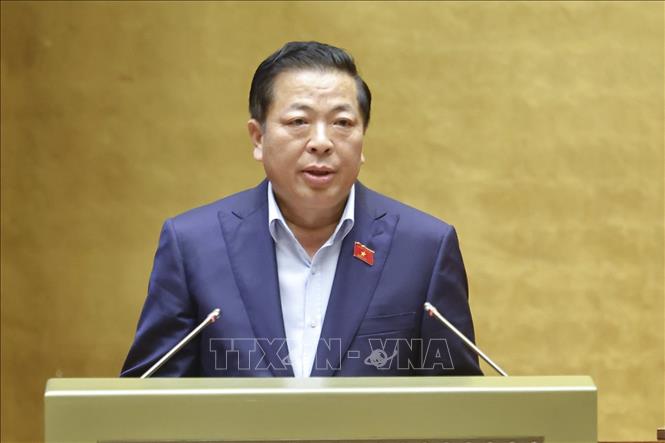
Minister of Construction Tran Hong Minh presents the Proposal on investment policy for the construction of Gia Binh International Airport. Photo: Doan Tan/VNA
Presenting the Investment Policy Report on the Gia Binh International Airport Construction Investment Project, Minister of Construction Tran Hong Minh said that Noi Bai International Airport is the main international aviation gateway of Hanoi Capital and the Northern key economic region. Recently, the number of passengers passing through Noi Bai International Airport has increased higher than the national average; however, the current exploitation exceeds the design capacity, and there are still some limitations in exploiting services, utilities, and technology compared to other international airports in the region. Although Noi Bai International Airport has researched and planned for expansion, it has encountered many difficulties due to limitations in land fund, site clearance, and the need for time to complete.
In that context, the development of Gia Binh International Airport is a strategic and breakthrough step, contributing to the restructuring of the Capital Region's aviation network according to the "dual hub" model that has been successfully applied by many major cities in the world such as London (UK), Tokyo (Japan). Gia Binh International Airport will play a strategic complementary role to Noi Bai, promoting advantages in space, connectivity and infrastructure, while creating momentum for the development of industry, logistics, e-commerce, tourism and services. The project also has special significance in ensuring national defense, security and serving important foreign affairs events, especially the APEC Summit 2027 (APEC 2027).
The Project investment is in line with the National Master Plan for the 2021-2030 period, with a vision to 20503; Master Plan for the development of the national airport system for the 2021-2030 period, with a vision to 2050; Gia Binh International Airport Planning for the 2021-2030 period, with a vision to 2050; Bac Ninh Provincial Planning for the 2021-2030 period, with a vision to 2050.
Gia Binh International Airport is invested and built according to international standards, becoming a smart, green, sustainable, new-generation, international-class airport, meeting the needs of socio-economic development, serving cargo exploitation, ensuring security and defense activities and important foreign events, including the APEC Summit in 2027; meeting 5-star international airport service standards, in the top 10 5-star airports in the world according to Skytrax criteria and in the group of airports with excellent passenger experience (AQS) according to the assessment of Airports Council International (ACI). At the same time, it aims to be the aviation gateway of the North, a transit airport for passengers, cargo and aircraft maintenance, repair and overhaul (MRO) facilities in the Asia-Pacific region.
The investment scale meets 4 levels according to the standards of the International Civil Aviation Organization (ICAO); meeting the exploitation needs of about 30 million passengers/year and 1.6 million tons of cargo/year in the period up to 2030; about 50 million passengers/year and 2.5 million tons of cargo/year in the vision to 2050. The total investment capital is about 196,378 billion VND; of which phase 1 is about 141,236 billion VND, phase 2 is about 55,142 billion VND...
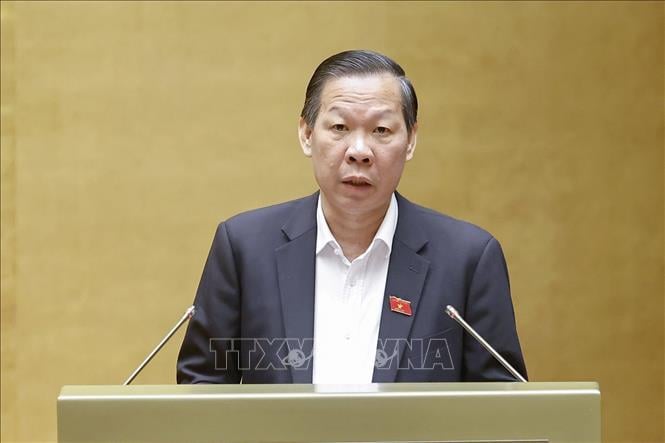
Chairman of the National Assembly's Economic and Financial Committee Phan Van Mai presents the Verification Report on the investment policy for the construction of Gia Binh International Airport. Photo: Doan Tan/VNA
Presenting the Review Report, Chairman of the National Assembly's Economic and Financial Committee Phan Van Mai said that there were opinions suggesting to supplement the forecast of transport demand in the coming periods of Gia Binh International Airport and the allocation of traffic with neighboring airports. At the same time, some opinions suggested to clarify the feasibility and technical compatibility of the "dual airport" and "multi-airport hub" exploitation model of the Capital region, especially in the allocation of passenger and cargo traffic and airspace management, to ensure safety, efficiency and synchronization in exploitation.
The appraisal agency proposed to clearly quantify the project's objectives, determine the roadmap and feasibility; supplement the assessment of geology, hydrology, drainage, impact on Ngu River and clarify the investment plan for a multi-modal transport system in sync with the project's completion schedule.
Along with that, it is necessary to assess the feasibility of completing the project to meet the APEC 2027 schedule, in the context of many problems regarding compensation, support, resettlement and complex geological conditions; training plans, career conversion, job creation for affected people and solutions to ensure food security when reclaiming large areas of double-crop rice land. Clarify the list, technical standards, inspection procedures, operation, personnel training and establish an inter-sectoral appraisal mechanism to ensure safety, security and stable operation.
The appraisal agency proposed to analyze the basis for determining the project's operating period of 70 years; it is necessary to determine based on the actual capital recovery period and the regulation of periodic monitoring every 5 years to update revenue, costs, profits and make flexible adjustments to ensure the harmony of interests between the State, investors and users; clarify the basis for calculating the project's investment rate, compare the investment rate with similar airport projects in the region and adjust according to local prices to choose the appropriate and optimal cost level; capital sources, ability to recover capital and repay loans.
Basically agreeing with the need to issue special mechanisms and policies to relocate historical and cultural relics to serve the project, the National Assembly's Economic and Financial Committee proposed to clearly stipulate the handling after relocating relics, especially the re-recognition of relics after relocation, ensuring the preservation of original elements and historical and cultural values. Along with that, develop a detailed conservation plan, assess the impact and a mechanism to monitor the relocation, clearly define the appraisal and management role of the Ministry of Culture, Sports and Tourism; apply modern scientific and technological solutions to ensure the preservation of original values, avoid deformation of relics...
Source: https://baotintuc.vn/thoi-su/cang-hang-khong-quoc-te-gia-binh-duoc-de-xuat-tro-thanh-cua-ngo-hang-khong-mien-bac-20251114102402268.htm


![[Photo] Unique art of painting Tuong masks](https://vphoto.vietnam.vn/thumb/1200x675/vietnam/resource/IMAGE/2025/11/14/1763094089301_ndo_br_1-jpg.webp)



![[Photo] Unique architecture of the deepest metro station in France](https://vphoto.vietnam.vn/thumb/1200x675/vietnam/resource/IMAGE/2025/11/14/1763107592365_ga-sau-nhat-nuoc-phap-duy-1-6403-jpg.webp)

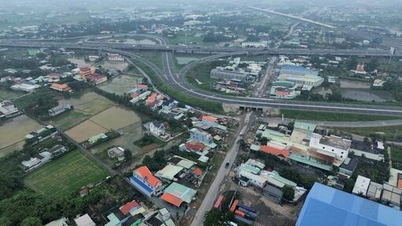










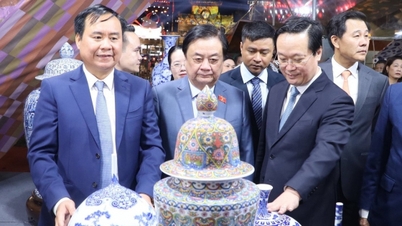


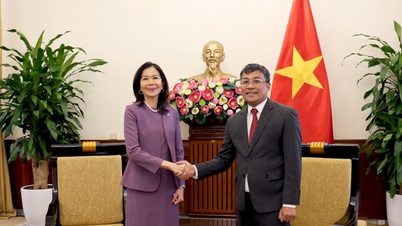

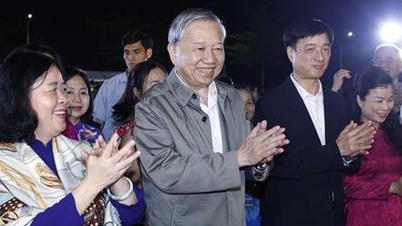

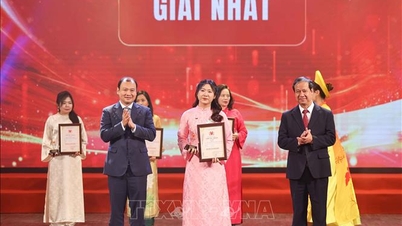






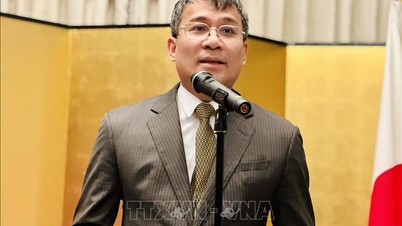




![[Photo] Special class in Tra Linh](https://vphoto.vietnam.vn/thumb/1200x675/vietnam/resource/IMAGE/2025/11/14/1763078485441_ndo_br_lop-hoc-7-jpg.webp)
















































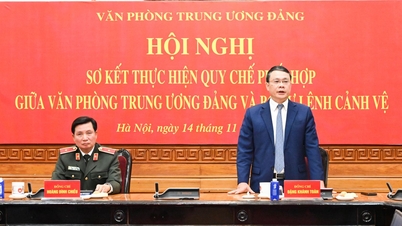























Comment (0)